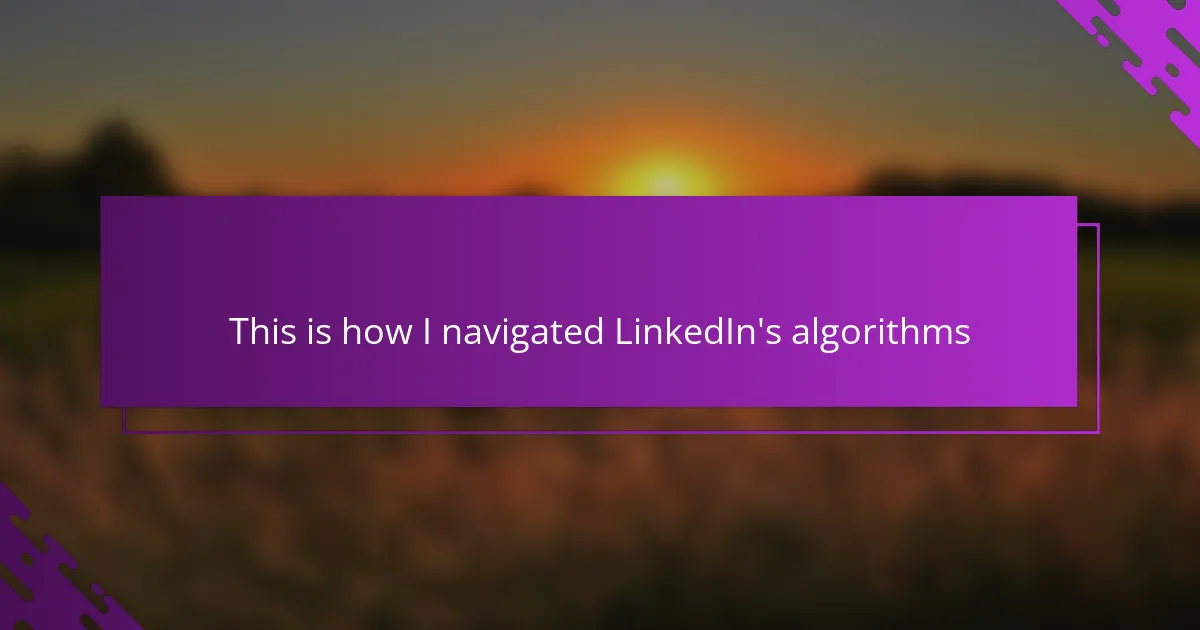Key takeaways
- LinkedIn’s algorithm prioritizes engagement types, with comments and shares enhancing visibility over simple likes.
- Content quality and dwell time are crucial; longer interactions and valuable insights encourage genuine connections and boost reach.
- Consistent posting and engaging with a diverse network lead to better algorithm favorability and increased audience interaction.
- Storytelling, questions, and bite-sized tips can significantly enhance engagement, transforming posts into mini-discussions.
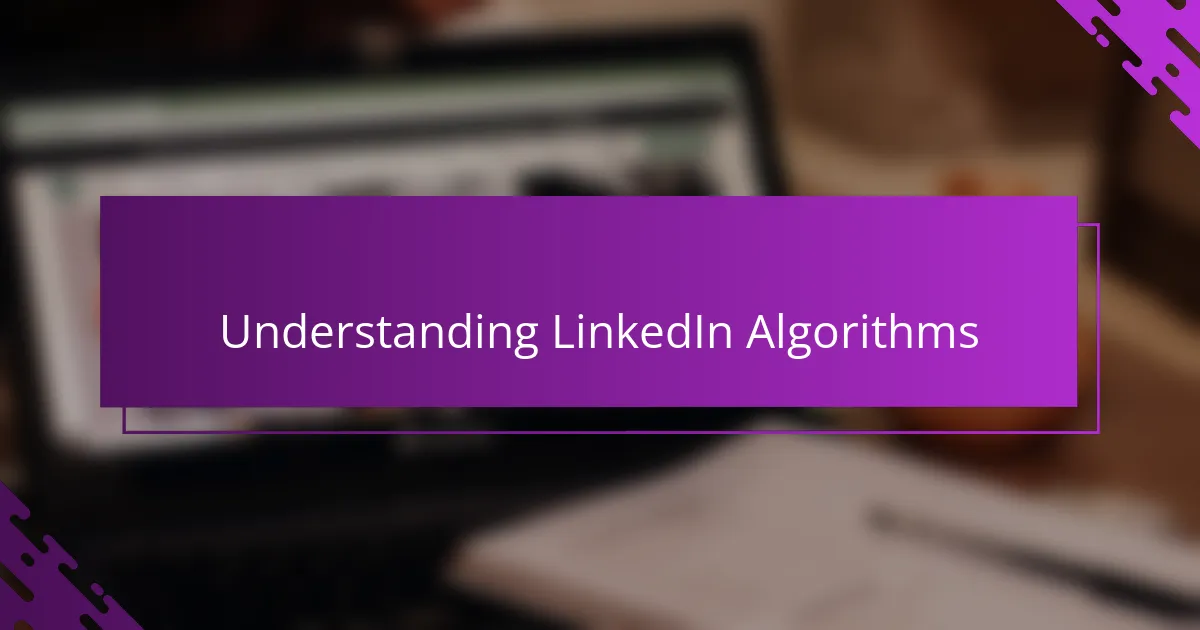
Understanding LinkedIn Algorithms
LinkedIn’s algorithm often feels like a mystery, doesn’t it? From my experience, it hinges largely on relevance—how well your content connects with your network and beyond. I used to post randomly until I realized the algorithm favors posts that spark genuine interactions within minutes of posting.
One thing I noticed is that the algorithm looks closely at engagement types—comments and shares carry more weight than just likes. This surprised me at first because I thought likes were gold, but meaningful conversations truly boost visibility. It made me rethink not just what I post but how I encourage discussion.
Have you ever wondered why some posts explode overnight while others barely get seen? In my journey, I found timing and consistency play subtle, yet critical roles. The algorithm favors active users who contribute regularly, so maintaining momentum became a game-changer in navigating this digital landscape.
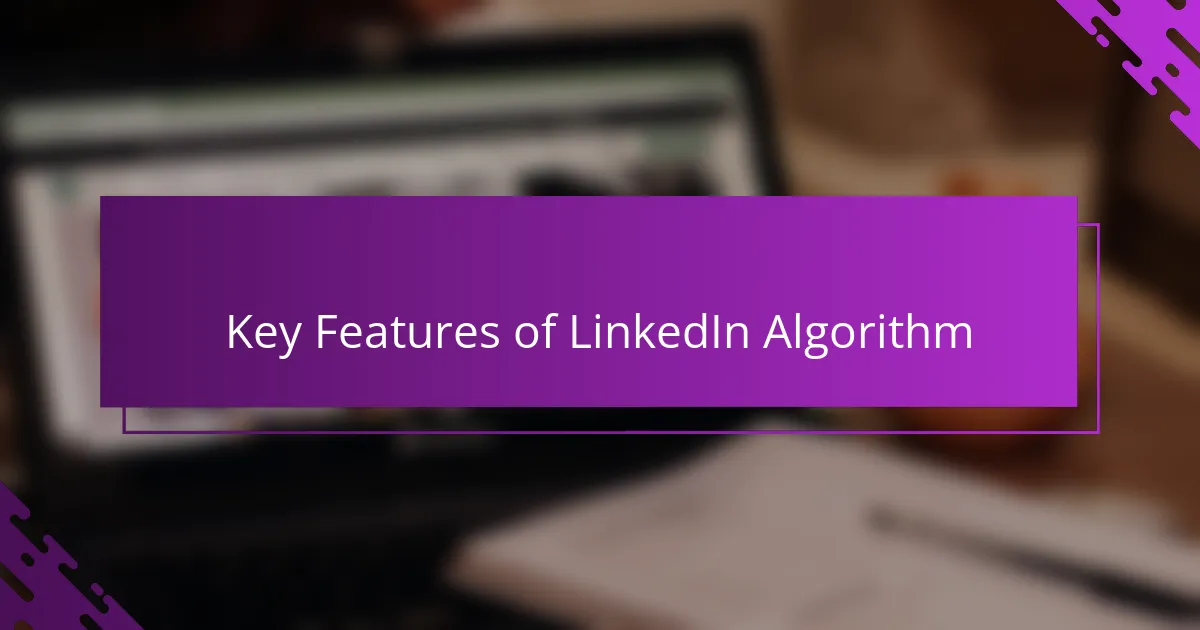
Key Features of LinkedIn Algorithm
What stood out to me most about LinkedIn’s algorithm is its emphasis on content quality over quantity. It’s not enough to just post often; the algorithm carefully evaluates how your content resonates with your audience. I realized that sharing insightful, valuable posts sparked more genuine interactions, which in turn helped my reach grow naturally.
Another key feature I experienced is the algorithm’s focus on dwell time—the amount of time people spend reading or engaging with your post. At first, I underestimated this, thinking quick likes and clicks were enough. But then I noticed longer comments and thoughtful responses made my posts linger longer on feeds, boosting their visibility.
Have you ever paid attention to how LinkedIn rewards network diversity? The algorithm favors content that sparks conversations across different industries and connections. Early in my journey, I stuck to my immediate circle, but when I started engaging with broader topics and diverse groups, my posts gained momentum far beyond my usual audience.
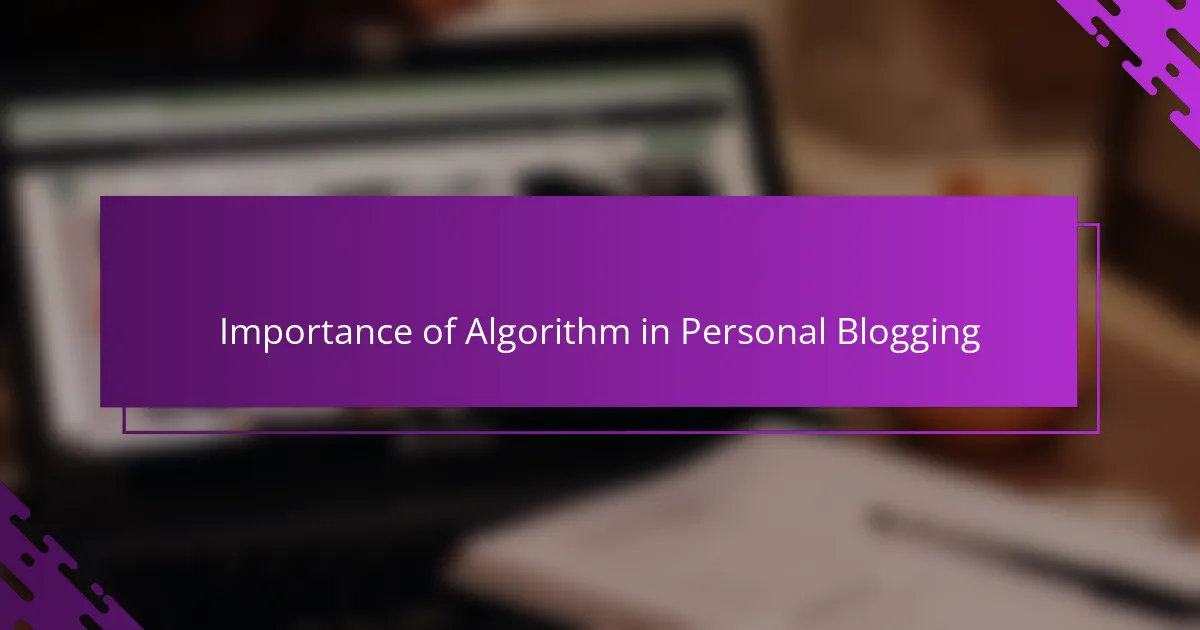
Importance of Algorithm in Personal Blogging
Algorithms might sound like dry tech jargon, but for personal bloggers like me, they’re actually the invisible engine driving who sees our stories. Have you ever wondered why some heartfelt posts barely get noticed while others take off? I learned that understanding this engine—this algorithm—was key to making my voice heard.
What really struck me is how the algorithm acts almost like a gatekeeper, deciding which content deserves attention. It feels a bit like playing a game where the rules aren’t fully clear, but once I realized that meaningful engagement was the currency, I shifted from just sharing to sparking real conversations. That change made all the difference.
I also found it fascinating how algorithms can shape not just reach, but the kind of personal connections you build. It’s no longer about shouting into the void; it’s about connecting with the right people at the right time. Have you noticed how your posts do better when you post consistently and engage authentically? That’s the algorithm quietly nudging you toward building something genuine.
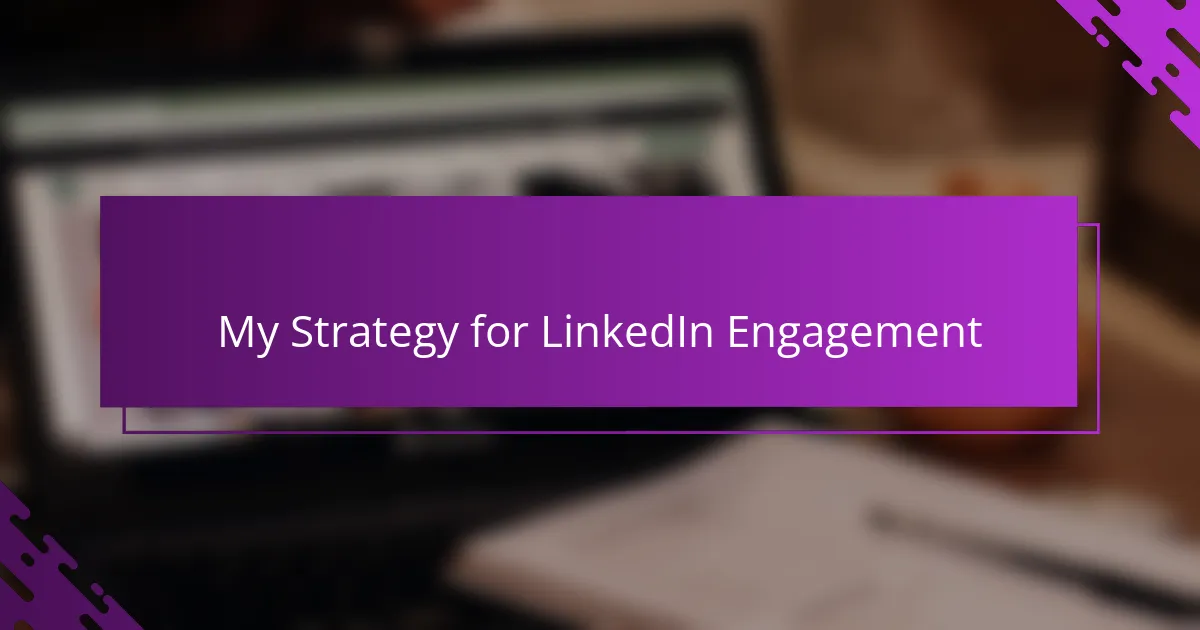
My Strategy for LinkedIn Engagement
My strategy for LinkedIn engagement really evolved when I stopped treating the platform like a casual social space. I started asking myself, “What kind of conversations do I want to have here?” That shift made me focus on crafting posts that invited thoughtful responses instead of just quick likes.
I also learned the power of replying to every comment. At first, it felt time-consuming, but I soon saw how these interactions kept my posts alive longer and attracted new connections. It turned LinkedIn into a place where I wasn’t just broadcasting, but genuinely connecting.
Timing became a surprising secret weapon for me. Posting when my network was most active, usually during weekday mornings, significantly increased the chances of immediate engagement. Have you ever noticed how a post that sparks early comments tends to snowball? It’s a game-changer.
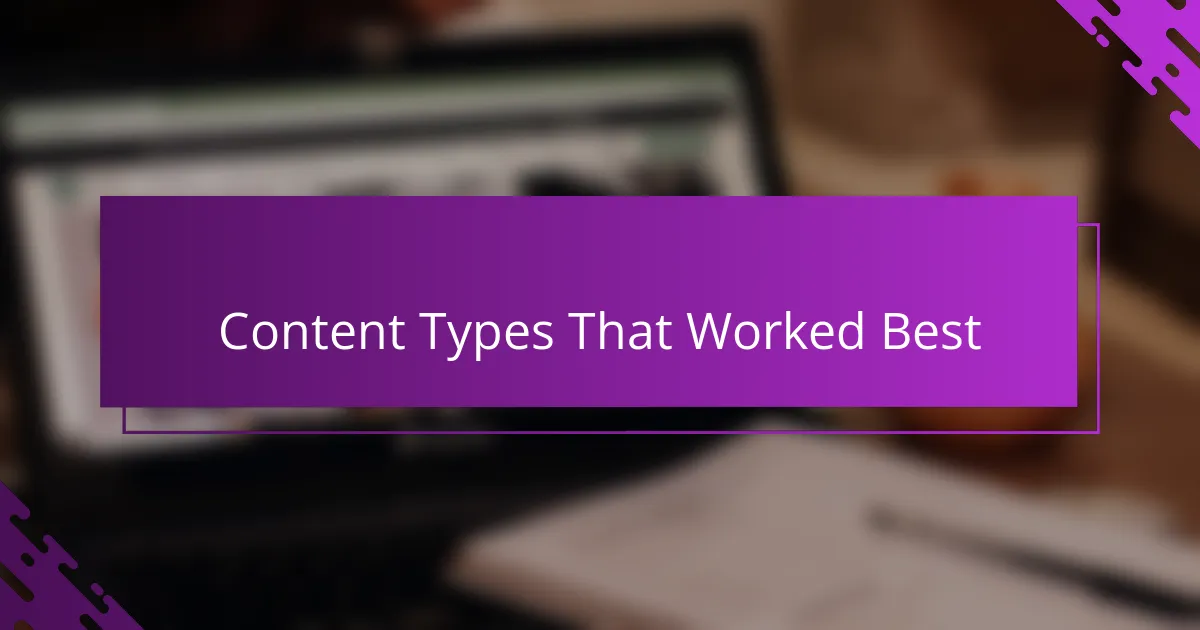
Content Types That Worked Best
One content type that consistently brought me results was storytelling. Sharing my personal experiences and lessons learned made my posts feel authentic and relatable, and I noticed people were more inclined to comment and share their own stories. Have you ever stopped to think why a simple story can spark so much conversation? It’s because we connect with real emotions, and the algorithm loves that.
I also found that posts incorporating questions or calls to action worked wonders. When I asked my network for their opinions or encouraged them to share advice, it naturally prompted more meaningful engagement. At first, I hesitated—what if nobody replied? But the responses grew steadily, turning my posts into mini-discussions that kept my content visible longer.
Then there were bite-sized insights—short, actionable tips or surprising facts. These quick reads suited the fast pace of LinkedIn users scrolling through their feeds and often led to shares and saves. I realized you don’t always need a long essay; sometimes, a few powerful sentences can ignite curiosity and keep your audience coming back for more.
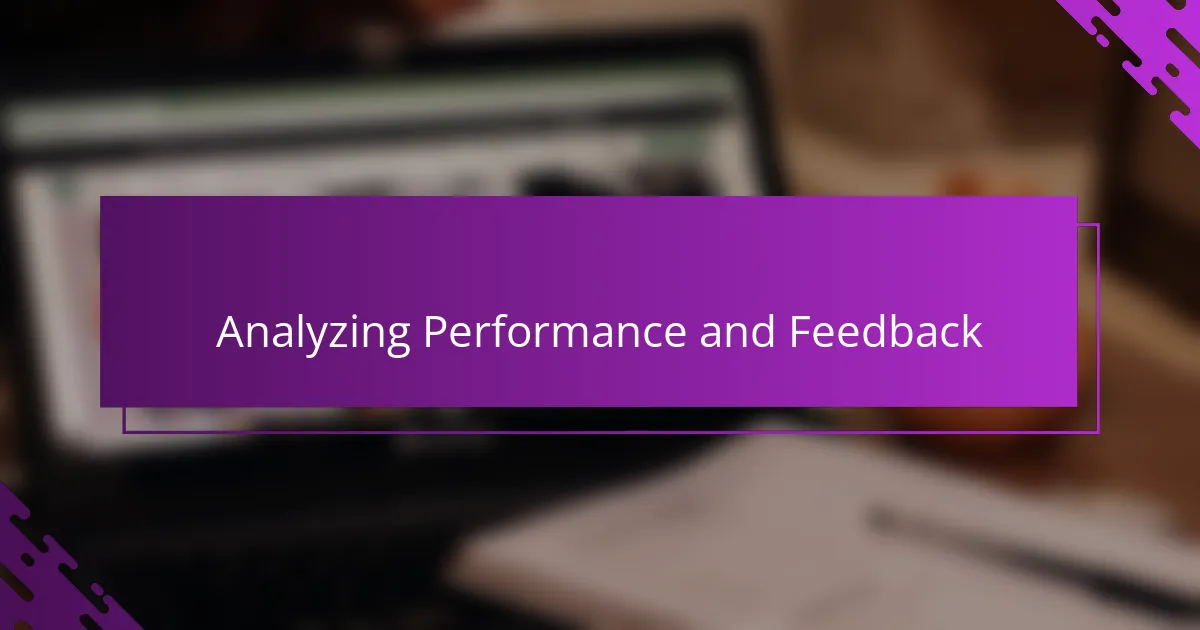
Analyzing Performance and Feedback
Looking closely at my post metrics was eye-opening—I realized that tracking which content sparked the most comments or shares helped me understand what truly resonated. Have you ever felt unsure about whether your message landed? For me, those engagement numbers became my compass, guiding me to tweak topics and formats that sparked genuine conversations.
Feedback wasn’t just numbers; it was also the tone and depth of comments that mattered. I found myself reading every response carefully, looking for insights or questions that revealed the audience’s real interests. This attentive approach made me feel more connected and helped me refine my voice to better meet my network’s needs.
Sometimes, the algorithm felt unpredictable, but analyzing when spikes or drops occurred helped me spot patterns. For example, after a particularly engaging post, I noticed a surge in profile visits and connection requests—proof that meaningful feedback can lead to valuable new relationships. Don’t you think that’s the real win behind watching your performance closely?
